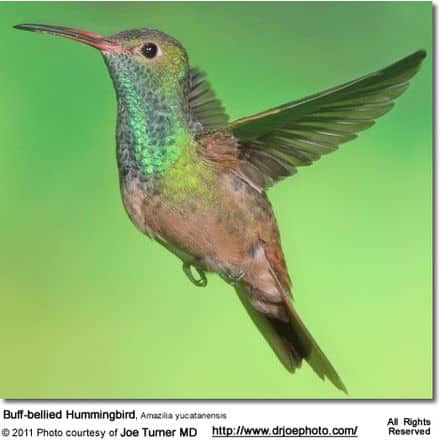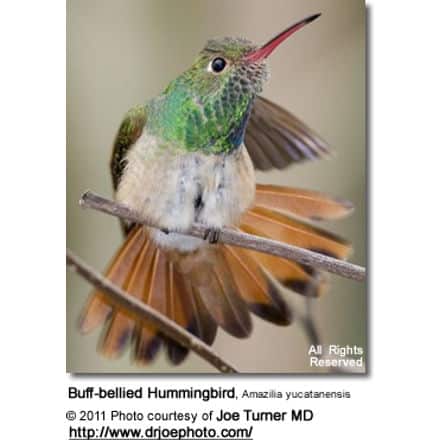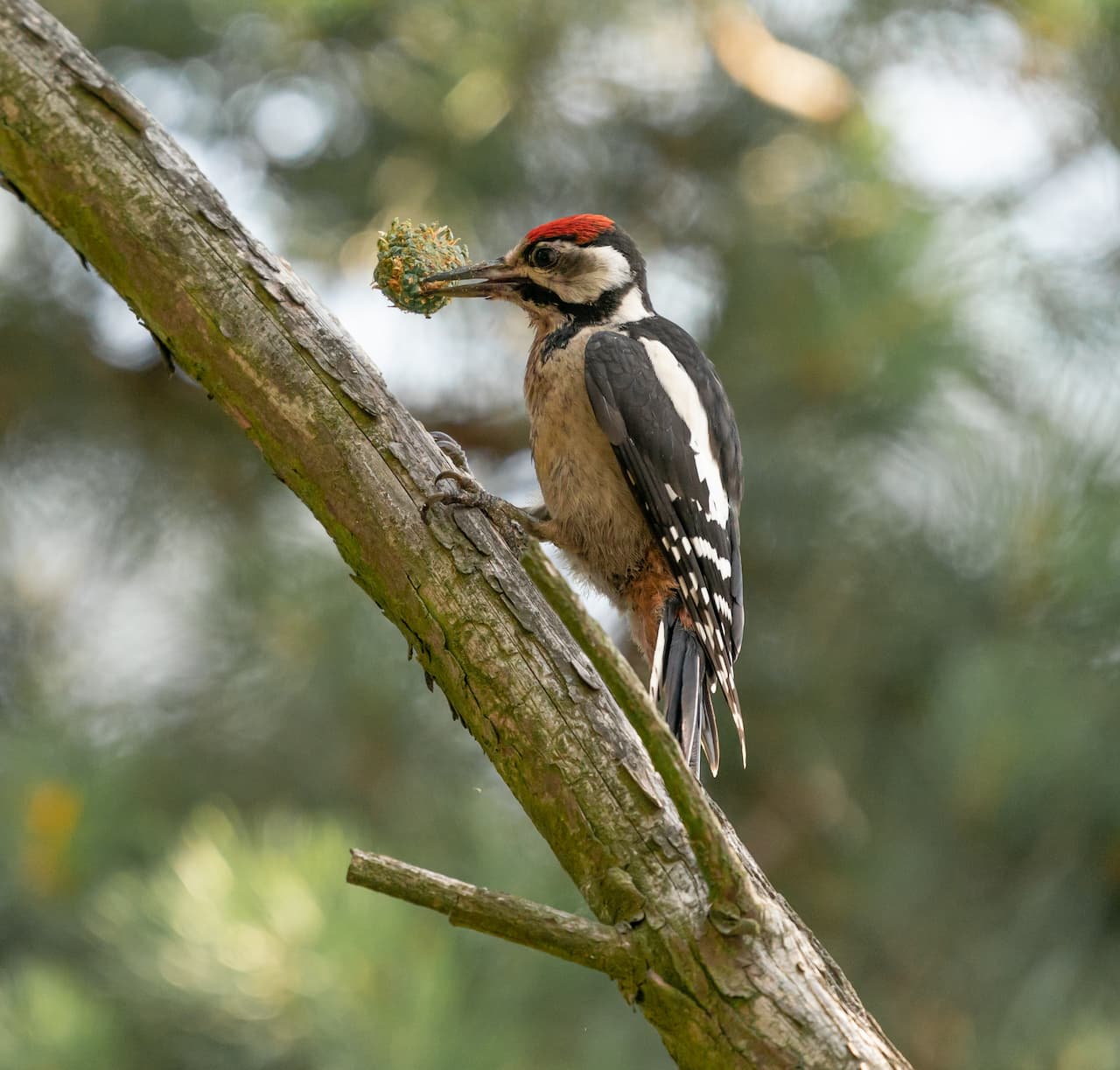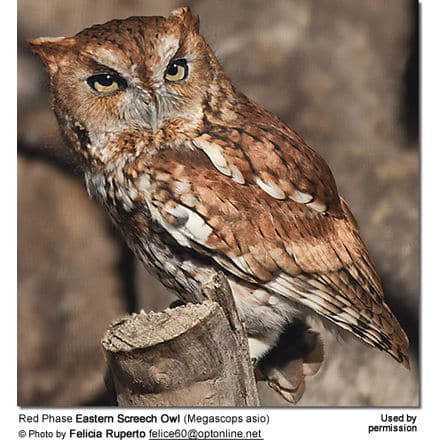Buff-bellied Hummingbirds
The Buff-bellied Hummingbirds (Amazilia yucatanensis) – also known as the Fawn-breasted Hummingbird / Yucatan Hummingbird or Yucatán Hummingbird – is a medium-sized, partially migratory hummingbird.

Other (Globall) Names
Spanish: Amazilia de Yucatán, Amazilia Yucateca, Colibrí panza café, Colibri Vientre-canelo, Colibrí Yucateco … Italian: Amazilia pettofulvo dello Yucatan, Colibrì panciacamoscio … German: Fahlbauchamazilie, Yucatan Amazilie, Yucatanamazilie … Latin: Amazilia cerviniventris, Amazilia yucatanensis, Amazilis cerviniventris … Czech: Kolibrík yukatánský, kolib?ík yukatánský … Danish: Brunbuget Amazilie … Finnish: Säämiskätimanttikolibri … French: Ariane du Yucatan, Colibri à ventre fauve … Japanese: akahashiemerarudohachidori … Dutch: Yucatankolibrie … Norwegian: Yucatánkolibri … Polish: szmaragdzik jukatanski, szmaragdzik jukata?ski … Russian: ?????????? ???????? … Slovak: kolibrík hnedastobruchý … Swedish: Beigebukad kolibri, Beigebukig kolibri
Distribution / Range
The Buff-bellied Hummingbird’s breeding range stretches from the lower Rio Grande Valley of southernmost Texas in the United States through the Yucatán Peninsula of eastern Mexico, northern Belize, and northwestern Guatemala in Central America.
Some of them winter along the Gulf Coast of the United States from Texas, through to Mississippi, Alabama, Georgia, and the Florida panhandle.
They are usually found in pine-oak forests, semi-arid scrub, and thickets – typically close to water.
Males and females aggressively defend feeding locations within their territory.
Subspecies and Distribution:
- Amazilia yucatanensis cerviniventris (Gould, 1856) – Nominate Race
- Found in eastern Mexico (Veracruz, Puebla, Chiapas)
- Amazilia yucatanensis yucatanensis (Cabot, 1845)
- Found in southeastern Mexico (Tabasco, Campeche, Yucatán), northern Belize, and northwestern Guatemala. Erroneously reported from Honduras.
- Amazilia yucatanensis chalconota (Oberholser, 1898)
- Found in extreme southern USA (Arkansas, Texas) to northeastern Mexico (south to San Luis Potosí).
Description
The Buff-bellied Hummingbirds averages 10–11 cm (3.9–4.3 in) in length and weighs around 4–5 g (0.14–0.18 oz).
Adults have a metallic olive green upper plumage. The lower chest ranges in coloration to whitish with various shades of grey green, or buffy (yellowish-brown).
The tail and primary wing feathers are rufous (reddish-brown) in color and slightly forked. The underwing is white.
The male’s throat is a metallic golden green and his bill is straight and slender. It is red with a darker tip.
The female has a dark upper bill and is generally less colorful than the male.
Hummingbird Resources
- Hummingbird Information
- Hummingbird Amazing Facts
- Attracting Hummingbirds to Your Garden
- Hummingbird Species
- Feeding Hummingbirds

Nesting / Breeding
Hummingbirds are solitary in all aspects of life other than breeding, and the male’s only involvement in the reproductive process is the actual mating with the female. They neither live nor migrate in flocks, and there is no pair bond for this species. Males court females by flying in a U-shaped pattern in front of them. He will separate from the female immediately after copulation. One male may mate with several females. In all likelihood, the female will also mate with several males. The males do not participate in choosing the nest location, building the nest, or raising the chicks.
The female is responsible for building the cup-shaped nest out of plant fibers woven together and green moss on the outside for camouflage in a protected location in a shrub, bush, or tree. She lines the nest with soft plant fibers, animal hair, and feathers down, and strengthens the structure with spider webbing and other sticky material, giving it an elastic quality to allow it to stretch to double its size as the chicks grow and need more room. The nest is typically found on a low, thin horizontal branch.
The average clutch consists of two white eggs, which she incubates alone, while the male defends his territory and the flowers he feeds on. The young are born blind, immobile, and without any down.
The female alone protects and feeds the chicks with regurgitated food (mostly partially digested insects since nectar is an insufficient source of protein for the growing chicks). The female pushes the food down the chicks’ throats with her long bill directly into their stomachs.
As is the case with other hummingbird species, the chicks are brooded only the first week or two and are left alone even on cooler nights after about 12 days – probably due to the small nest size. The chicks leave the nest when they are about 7 – 10 days old.
Diet / Feeding
The Buff-bellied Hummingbirds primarily feed on nectar taken from a variety of brightly colored, scented small flowers of trees, herbs, shrubs, and epiphytes. They favor flowers with the highest sugar content (often red-colored and tubular-shaped) and seek out, and aggressively protect, those areas containing flowers with high-energy nectar.








